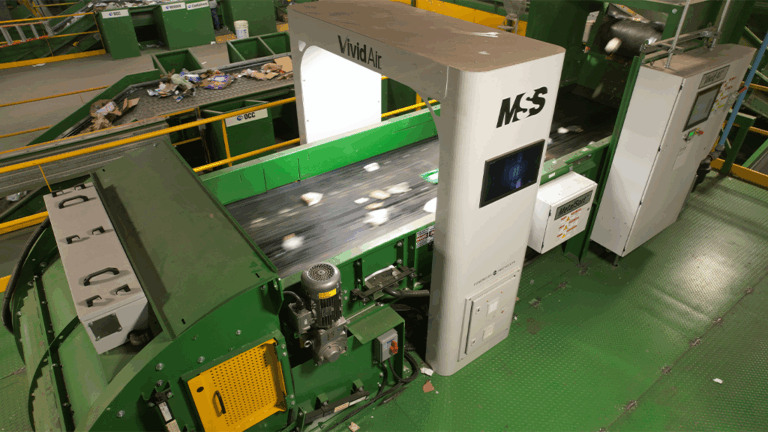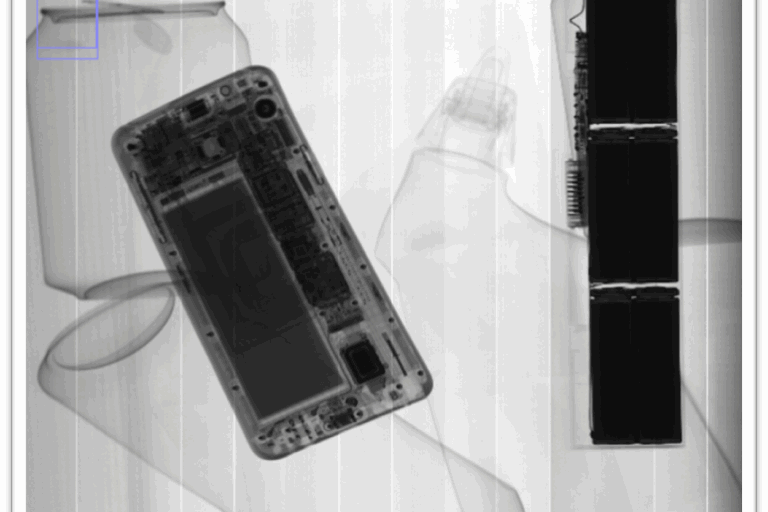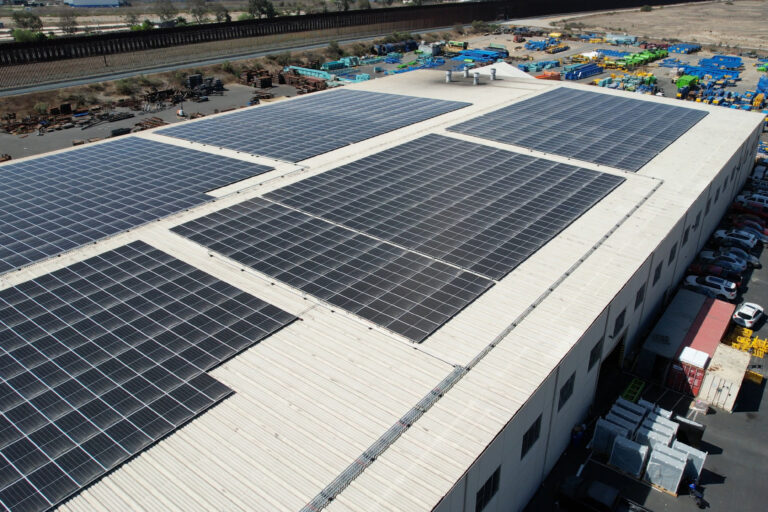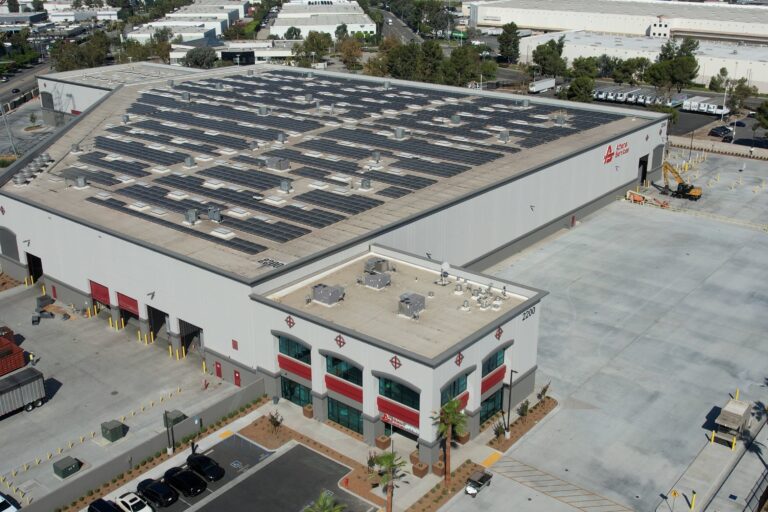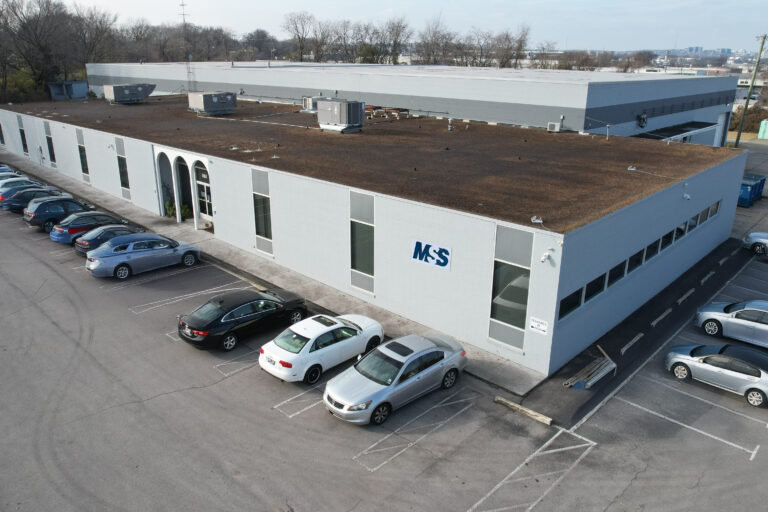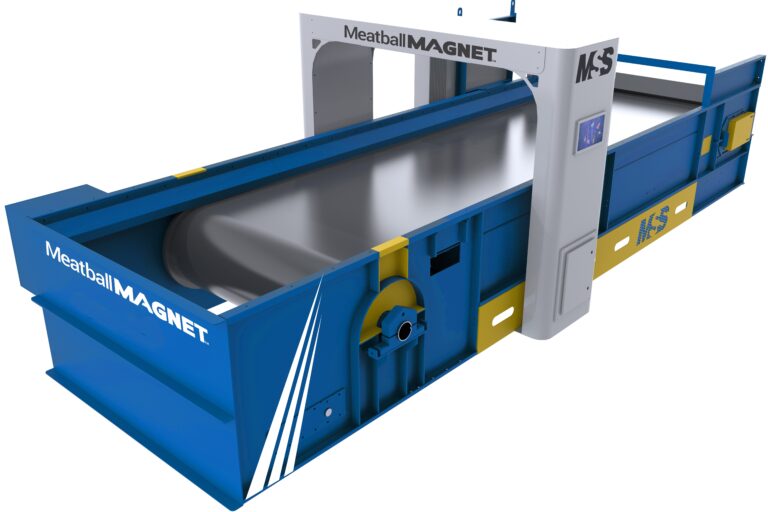MSS’s Vivid Air technology offers a compact alternative to robotic arms and automates one of the last manual sorting tasks.
Automation in recycling has advanced rapidly over the past five years. Across the industry, automated material recovery facilities (MRFs) are recognized for achieving higher throughputs, better product quality, and improved worker safety.
Many large modern MRFs now operate fully automated container and fibre lines, with manual labour limited to sorting oversized materials such as OCC, non-program items, bulky rigid plastics, and wood. These tasks typically occur at the start of the sorting process on pre-sort or auger screen post-sort stations.
Smaller and older facilities, however, often cannot justify the higher capital costs of full automation. These plants still rely on manual labour for quality control when processing PET, HDPE, aluminum, and fibre grades. Labour shortages in waste management and recycling have persisted since the pandemic, and recruitment challenges continue to impact operations.
NIR optical sorter limitations
Conventional automated sorting technologies, such as near-infrared (NIR) and color sensors, can support quality control automation. But these systems are typically built for large-scale sorting applications, handling material widths of up to 10 feet and speeds reaching 1,000 feet per minute. Their size and cost make them well-suited for new large MRFs but less practical for retrofits or smaller facilities where space and budget constraints remain significant.
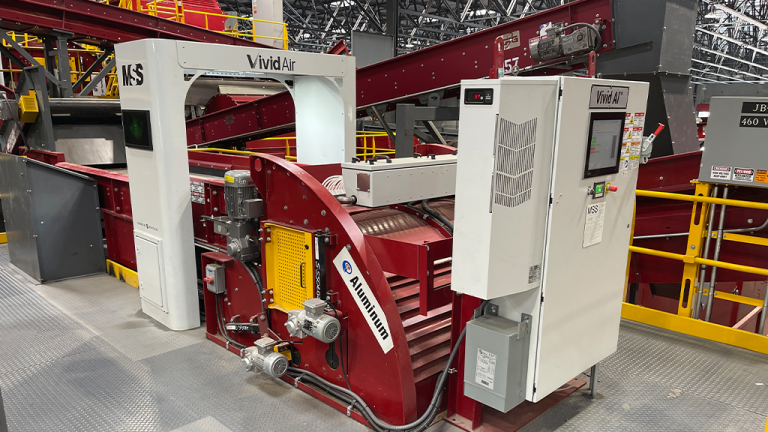
Robotic arm extraction
To address the limitations of manual sorting, many recycling facilities have begun integrating robotic arms into sort positions. In the past seven to eight years, several hundred robotic units have been installed across the U.S.
Robotic extraction systems are especially common in retrofit projects where space is limited, but they bring specific technical challenges related to speed, efficiency, and maintenance.
Speed and efficiency
Delta robots can perform up to 80 movements per minute, while multi-axis robots average around 30. Under ideal conditions, vacuum-based end effectors operate at 65 to 75 percent efficiency, resulting in about 55 effective picks per minute for delta robots and around 21 for multi-axis units. By comparison, human sorters average roughly 45 picks per minute.
Material spread
Robotic systems perform best when materials are evenly distributed on the belt. When target items arrive in surges or when multiple items overlap, recovery and purity rates can drop because not all items are captured.
Cost per pick
Bellows-style suction cups used in robotic picking typically require replacement once per shift at a cost of $15 to $20 per cup. The vacuum systems that power these effectors consume about 10 times more compressed air than positive-pressure air jets, which significantly increases operating costs.
Maintenance requirements
Robotic arms need regular inspection throughout each shift. Although automated monitoring can help, facilities using multiple robots often assign dedicated staff to oversee performance, troubleshooting, and maintenance.
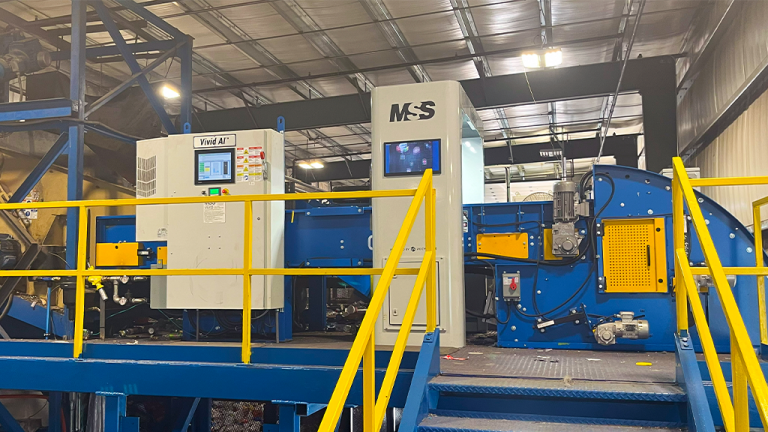
Vivid Air
To meet the demand for compact and efficient automation, MSS developed Vivid Air, the first air-ejector-based sorting solution powered by AI sensing technology.
Designed for flexibility, the compact system can be integrated into new plant layouts or retrofitted onto existing manual sort conveyors. Its slightly reduced conveyor speed enables shorter conveyor lengths than those required for conventional NIR optical sorters.
According to MSS, Vivid Air achieves a cost per pick up to 12 times lower than robotic arms, largely due to the reduced replacement costs of suction cup effectors. The system’s compressed air valves require almost no maintenance, and air consumption per pick is about 10 times lower than that of robotic systems.
Expanding options for MRFs
The integration of AI with established air-ejector extraction methods demonstrates a growing shift toward flexible, scalable automation that suits a wide range of facility sizes and budgets. With more technology options available, material recovery facilities can enhance throughput, product quality, and worker safety while advancing modernization efforts.
By automating one of the last areas in MRFs still dependent on manual sorting, air ejector-based systems like Vivid Air help operators overcome persistent labor challenges and improve operational efficiency
This article was originally published on October 13th, 2025 in Recycling Product News.
